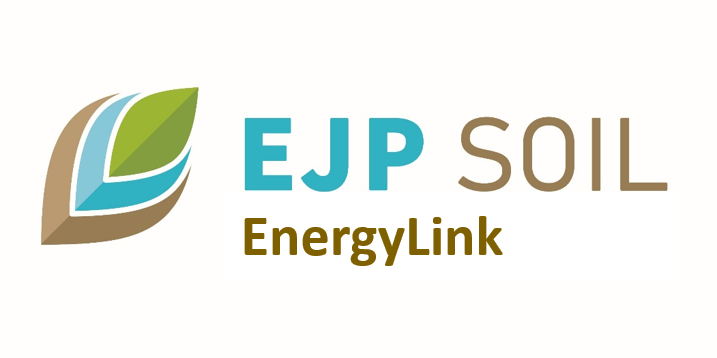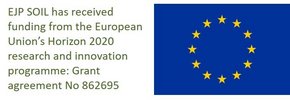EnergyLink
| Start: | 1 November 2021 |
| Duration: | 36 Months |
| Aim: | Linking crop diversification to microbial energy allocation and organic carbon storage in soils (EnergyLink) |
| Keywords: | Agroecosystems, Soil Microbiome, Soil carbon storage, Microbial energetics, Carbon use efficiency, Crop diversification, Diversity interconnection, Stoichiometry, Soil organic matter modelling, Policy advice, Climate smart agriculture |
| Contact: | Project leader: Anke Herrmann, Swedish University of Agricultural Sciences (SLU), (anke.herrmann@slu.se) Project communication representative: Annelein Meisner, |

Crop diversification is a potentially attractive agricultural practice for enhancing organic carbon storage in soils. The aim of EnergyLink is to understand the link between crop diversity and the processing of organic carbon by the soil microbiome across a pan-European pedo-climatic gradient. The central hypothesis is that greater crop diversity results in more efficient microbial use of carbon, thus enhancing the potential of soils to store carbon. The underlying mechanisms will be elucidated by combining molecular level methods in a bioenergetics framework. Data will inform models describing the turnover of soil organic matter and implement future climate scenarios. The project will provide policy relevant data on which to base future CAP instruments and contribute to the development of carbon farming.
Background
EnergyLink aims improve the understanding on how aboveground plant trait diversity can be used to manage belowground resource use efficiency of the soil microbiome and organic matter persistence in soil. The over-arching premise is that aboveground plant trait diversity can be exploited to manage microbial functional diversity and resource use efficiency in soils, thus optimizing carbon dynamics and improving the ecosystem services of carbon sequestration and global change mitigation.
The project is constructed around the central hypothesis that aboveground plant diversity produces soil organic matter with greater molecular diversity (Fig. 1). This in turn, affects the return on metabolic investment, carbon use efficiency (CUE) of the soil microbiome, resulting in a larger carbon sequestration potential in soil. An ancillary hypothesis is that the relationship between CUE and organic matter inputs is modulated by the functional and compositional diversity of the soil microbiome.
The specific objectives of EnergyLink are:
- Further our fundamental understanding of how plant diversity relates to the ecosystem service of carbon sequestration in soil, with a particular focus on agricultural systems including cover-crops, organic farming and/or increasing the intraspecific diversity of crops.
- Identify and quantify how the diversity of the soil microbiome affects organic carbon processing, carbon use efficiency (CUE) and the persistence of organic carbon in soil by exploring interactions between chemical and biological diversity in soils.
- Incorporate new knowledge on the role of the soil microbiome into mathematical models describing the turnover of soil organic matter and validate models at European long-term experiment sites.
- Provide the agricultural industry, policy makers and associated stakeholders with new management tools for future-proofing of food supply and mitigation of climate change.
Work Packages
WP1: EnergyLink Management
WP Leader: Anke Herrmann (SLU)
WP deputy: Heike Knicker (CSIC)
The overall objective of this WP is to coordinate the project, execute all daily project management and administration activities necessary for a successful project execution. Specifically, we will ensure the smooth management of the project, timely delivery of all attendant reports etc.
WP2: Site Selection & Synthesis
WP Leader: Abad Chabbi (INRAE)
WP deputy: Marjetka Suhadolc (ULBF)
The objectives of this work package are:
- Select sampling sites suitable for the planned research activities
- Create harmonized standard operation procedures for sampling, laboratory and data analysis, within this project and among related EJP Soil projects,
- Synthesise the results from experimental work packages (WP3-5) which will provide the backbone for SOM model projections (WP6).
WP3: Soil chemistry
WP Leader: Erich Inselsbacher (BIOS/BOKU)
WP deputy: Heike Knicker (CSIC)
The chemical composition of various plant traits varies significantly but little is known whether this is mirrored in the diversity of belowground carbon stocks. The overall objective of this WP is to understand the effect of aboveground diversification on the chemical composition of SOM. We hypothesize that a higher plant diversity leads to a higher molecular diversity of SOM. This WP will provide a comprehensive chemical characterization of SOM including microbial necromass and the evaluation of energetic return on investment as a function of plant diversity. We will work closely together with WPs 4 and 5 since soil chemistry is closely connected to soil biology.
WP4: Soil Biology
WP Leader: Ángel Valverde (IRNASA-CSIC)
WP deputy Erica Lumini (CNR)
The overall objective of WP4 is to elucidate whether aboveground crop diversification increases microbial functional diversity, affect microbial biomass and/or causes shifts in microbiome composition. We hypothesize that a greater crop diversification increases microbiome diversity and consequently modify soil functions, carbon use efficiency (CUE) and soil organic carbon (SOC) storage. We will work closely together with WPs 3 and 5, since soil biology is closely connected to soil chemistry and give fundamental information to understand microbial physiology.
WP5: Microbial physiology
WP Leader: Christopher Poeplau (vTI)
WP deputy: Katharina Keiblinger (BOKU)
Understanding the physiological response of the soil microbiome to aboveground crop diversification and its potential effect on carbon stabilization pathways is the overall objective of this WP and a key objective in this project. It is hypothesized that changes in organic matter input quantity and quality (including both molecular diversity and stoichiometry) as introduced by agricultural management will affect how microbes metabolise soil organic matter and, ultimately, the persistence of SOM. Especially shifts in microbial CUE and decomposition rates strongly affect the transformation of fresh plant inputs into persistent SOC.
Work package WP6: Modelling soil organic matter
WP leader: Marjoleine Hanegraaf (WR)
WP deputy: Sara Di Lonardo (CNR)
Assessing the relative impact of the soil microbiome on the formation and persistence of SOC is the overall objective of this WP. Our hypothesis is that the soil microbiome has significant and substantial impact on SOC persistence. Based on recent insights in the literature and data derived from WPs 2-5, a mechanistic prototype Energy-Model will be formulated, e.g. on the relationship between the microbial biomass poo (e.g. CUE, return on metabolic investment) and SOC decomposition rate. Adaptations of current and/or next generation models will be used for upscaling results in space and time, to deliver an estimate of the effect of the soil biome on carbon sequestration and persistence.
Work package WP7: Outreach activities
WP Leader: Anke Herrmann (SLU)
WP deputy: Laura Martinez Garcia (WR)
The main objective of WP7 is to make this project and its results visible for a large community of stakeholders. Moreover we want to promote the usability of the obtained results in this project to the partners and stakeholders by sharing our modelling results. Initially this WP seeks to rise general public awareness and foster improved societal understanding of the role of the soil microbiome in soil carbon sequestration. This research is part of a strategic vital area within the EU, and EnergyLink warrants new knowledge to ensure sustainable societal development.
